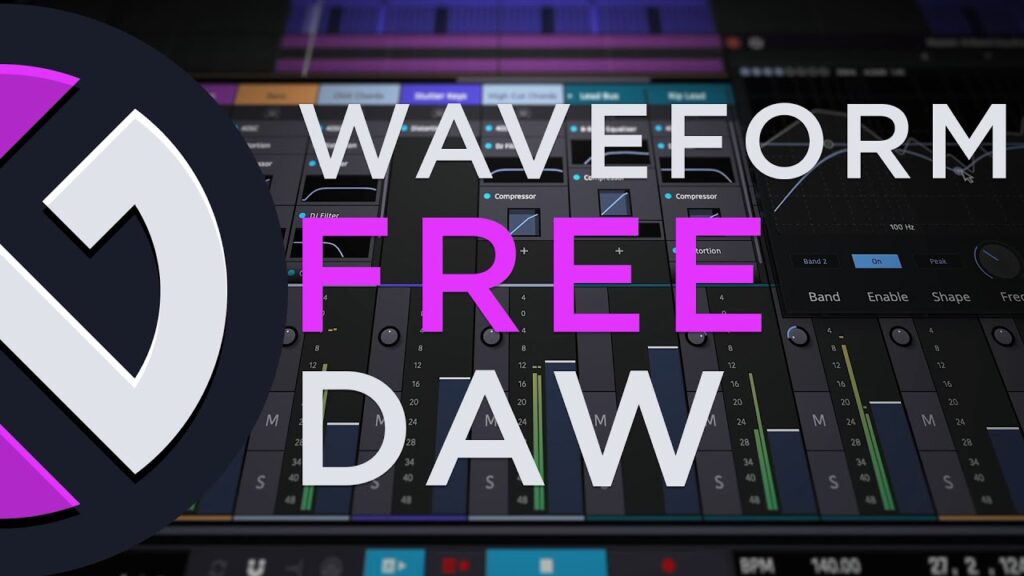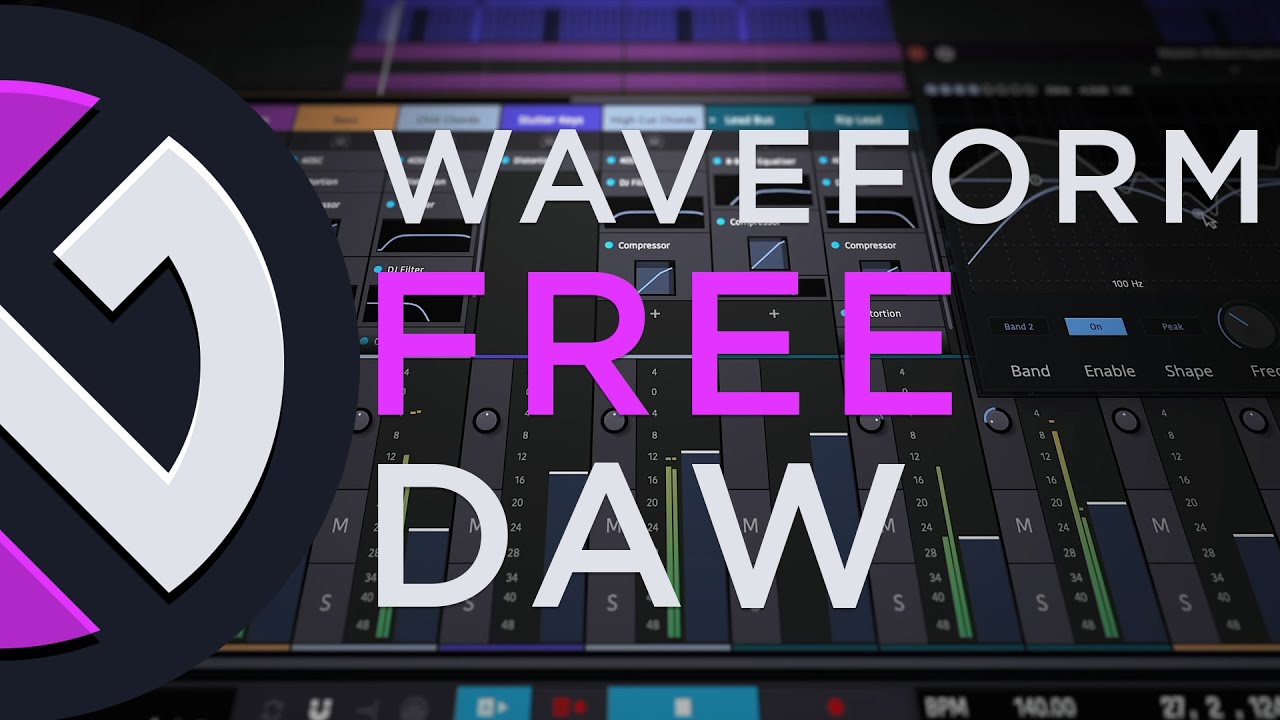
Mastering Waveform Free: A Comprehensive Tutorial
Waveform Free is a powerful digital audio workstation (DAW) that’s surprisingly capable, considering its price tag – free! Whether you’re a budding music producer, a seasoned audio engineer looking for a lightweight option, or simply someone who wants to record and edit audio, Waveform Free offers a robust set of tools to get the job done. This tutorial will guide you through the essentials of using Waveform Free, from setting up your audio interface to mixing and mastering your tracks. We’ll cover everything you need to know to unlock the full potential of this fantastic free DAW. Understanding the fundamentals of Waveform Free will empower you to create professional-sounding audio projects without breaking the bank. Let’s dive in and explore the world of Waveform Free!
Getting Started with Waveform Free
Downloading and Installing Waveform Free
The first step is to download and install Waveform Free. Head over to the Tracktion Software website and create an account (if you don’t already have one). Once you’re logged in, you can download the installer for your operating system (Windows, macOS, or Linux). The installation process is straightforward; just follow the on-screen instructions. After installation, launch Waveform Free, and you’ll be prompted to activate your license. This is also a simple process that involves logging into your Tracktion account from within the software.
Configuring Your Audio Interface
Before you start recording, you need to configure your audio interface. This is the device that connects your microphones, instruments, and speakers to your computer. In Waveform Free, go to ‘Settings’ (usually found under ‘File’ or ‘Waveform Free’ in the menu bar) and then ‘Audio Devices’. Here, you’ll see a list of available audio devices. Select your audio interface as both the input and output device. You can also adjust the buffer size, which affects latency (the delay between when you play an instrument and when you hear it). A smaller buffer size reduces latency but requires more processing power. Experiment to find a balance that works for your system. Properly configuring your audio interface is crucial for a smooth recording experience in Waveform Free.
Understanding the Waveform Free Interface
The Waveform Free interface might seem a bit daunting at first, but it’s actually quite intuitive once you get the hang of it. The main areas are the track view (where you arrange your audio and MIDI clips), the mixer (where you adjust levels, add effects, and pan your tracks), and the browser (where you can access your audio files, plugins, and presets). Take some time to explore each of these areas and familiarize yourself with the different buttons, knobs, and menus. Hovering your mouse over an element will usually display a tooltip explaining its function. Understanding the layout is essential for efficient workflow in Waveform Free.
Recording Audio in Waveform Free
Creating a New Project
To start a new project, go to ‘File’ and then ‘New’. You’ll be prompted to choose a project folder and name your project. Waveform Free will then create a new, empty project ready for you to start recording. Consider setting up a good folder structure for your projects to keep everything organized from the start. This will save you time and headaches later on. Naming your project clearly is also important for easy identification and retrieval. Starting with a well-organized project is key to a successful recording session in Waveform Free.
Setting Up Tracks
Before you can record, you need to create tracks. A track is essentially a container for your audio or MIDI data. To create a new track, right-click in the track view and select ‘Add Audio Track’ or ‘Add MIDI Track’. For audio tracks, you’ll need to select the input channel that corresponds to your microphone or instrument. For MIDI tracks, you’ll need to select the MIDI input device (e.g., your MIDI keyboard). You can rename tracks by double-clicking on their names. Setting up your tracks correctly ensures that the audio from your sources is routed properly into Waveform Free. This is a fundamental step in the recording process.
Recording Your First Track
Now it’s time to record! Arm the track by clicking the record enable button (the red circle) on the track header. Make sure the input level is set correctly so that the audio isn’t clipping (too loud) or too quiet. You can adjust the input level using the gain knob on your audio interface or the input gain control on the track. Once you’re happy with the levels, click the record button (the big red circle at the bottom of the screen) to start recording. When you’re finished, click the stop button. Your recorded audio will now appear as a clip on the track. Congratulations, you’ve recorded your first track in Waveform Free! Remember to monitor your levels carefully throughout the recording process.
Editing Audio in Waveform Free
Basic Editing Techniques
Waveform Free offers a range of editing tools for manipulating your audio clips. You can cut, copy, paste, trim, and move clips around the track view. To cut a clip, select the clip and press ‘Ctrl+X’ (Windows) or ‘Cmd+X’ (macOS). To copy a clip, select the clip and press ‘Ctrl+C’ or ‘Cmd+C’. To paste a clip, click where you want to paste it and press ‘Ctrl+V’ or ‘Cmd+V’. To trim a clip, drag the edges of the clip in or out. These basic editing techniques are essential for cleaning up your recordings and arranging your tracks in Waveform Free. Mastering these skills will significantly improve your workflow.
Using the Clip Editor
For more detailed editing, you can use the clip editor. Double-click on a clip to open it in the clip editor. Here, you can zoom in and out, adjust the gain, and apply fades. Fades are useful for smoothing out transitions between clips and preventing clicks and pops. You can also use the clip editor to reverse the audio, change the pitch, and apply other effects. The clip editor provides a powerful set of tools for fine-tuning your audio in Waveform Free. Experiment with the different features to discover their capabilities.
Time Stretching and Pitch Shifting
Waveform Free also allows you to time stretch and pitch shift your audio. Time stretching changes the duration of a clip without affecting its pitch, while pitch shifting changes the pitch without affecting its duration. These techniques can be useful for correcting timing errors, creating special effects, or transposing audio to different keys. To access these features, right-click on a clip and select ‘Properties’. In the ‘Properties’ window, you’ll find options for time stretching and pitch shifting. Be aware that extreme time stretching or pitch shifting can introduce artifacts, so use these features judiciously. These tools offer creative possibilities within Waveform Free.
Mixing in Waveform Free
Understanding the Mixer
The mixer is where you adjust the levels, pan, and effects of your tracks. Each track in the track view has a corresponding channel in the mixer. The mixer channel includes controls for volume, pan, mute, solo, and sends. The volume fader controls the overall level of the track. The pan knob controls the position of the track in the stereo field. The mute button silences the track, and the solo button isolates the track. The sends allow you to route the track’s signal to other tracks or buses. Understanding the mixer is essential for creating a balanced and polished mix in Waveform Free. Familiarize yourself with the different controls and their functions.
Adding Effects
Waveform Free comes with a range of built-in effects, including EQ, compression, reverb, and delay. To add an effect to a track, click on one of the empty effect slots in the mixer channel. A menu will appear, allowing you to select an effect from the list. You can then adjust the parameters of the effect to taste. Experiment with different effects and settings to find the sound you’re looking for. Effects are a crucial part of the mixing process and can dramatically enhance the sound of your tracks in Waveform Free. Don’t be afraid to try new things and explore the possibilities.
Using Buses
Buses are used to group multiple tracks together and process them as a single unit. This can be useful for applying effects to multiple tracks at once, such as adding reverb to all the drums or compressing all the vocals. To create a bus, right-click in the mixer and select ‘Add Bus’. Then, route the outputs of the tracks you want to group to the bus. You can then add effects to the bus channel to process all the tracks simultaneously. Using buses can simplify your mixing workflow and help you achieve a more cohesive sound in Waveform Free. They are a powerful tool for managing complex mixes.
Mastering in Waveform Free
Understanding Mastering
Mastering is the final stage of the audio production process. It involves optimizing the overall sound of your tracks for distribution. This typically includes adjusting the overall level, adding compression and EQ, and creating a consistent sonic signature across all the tracks on an album. Mastering is a complex and specialized skill, but you can achieve decent results using the tools available in Waveform Free. A basic understanding of mastering principles is helpful for achieving a professional sound.
Using Mastering Plugins
Waveform Free includes several plugins that can be used for mastering, such as EQ, compression, and limiting. A limiter is particularly important for mastering, as it prevents the audio from clipping (exceeding 0 dBFS), which can cause distortion. To use these plugins, create a master track (a bus that all your tracks are routed to) and add the plugins to the master track channel in the mixer. Adjust the parameters of the plugins carefully to achieve a balanced and polished sound. Mastering plugins are essential for achieving a professional-sounding final product in Waveform Free.
Exporting Your Final Mix
Once you’re happy with your master, it’s time to export your final mix. Go to ‘File’ and then ‘Export’. Choose the desired file format (WAV, MP3, etc.), bit depth, and sample rate. WAV is generally preferred for archival purposes, while MP3 is suitable for online distribution. Click ‘Export’ to create the final audio file. Congratulations, you’ve mastered your track in Waveform Free! Make sure to listen to your exported mix on different devices to ensure it sounds good everywhere. Proper export settings are crucial for preserving the quality of your final mix.
Conclusion
Waveform Free is an incredibly powerful and versatile DAW that offers a wealth of features for free. By following this tutorial, you should now have a solid understanding of the basics of using Waveform Free, from setting up your audio interface to recording, editing, mixing, and mastering your tracks. Remember to experiment and explore the different features to discover their full potential. With practice and dedication, you can create professional-sounding audio projects using Waveform Free. So go ahead, unleash your creativity and start making music!
This comprehensive guide to Waveform Free hopefully provides a solid foundation for users to explore the software. Remember to continually practice and experiment with the various tools and features within Waveform Free to unlock its full potential. Good luck!
[See also: Advanced Mixing Techniques in Waveform Free]
[See also: Optimizing Your Workflow in Waveform Free]
[See also: Exploring Third-Party Plugins with Waveform Free]

